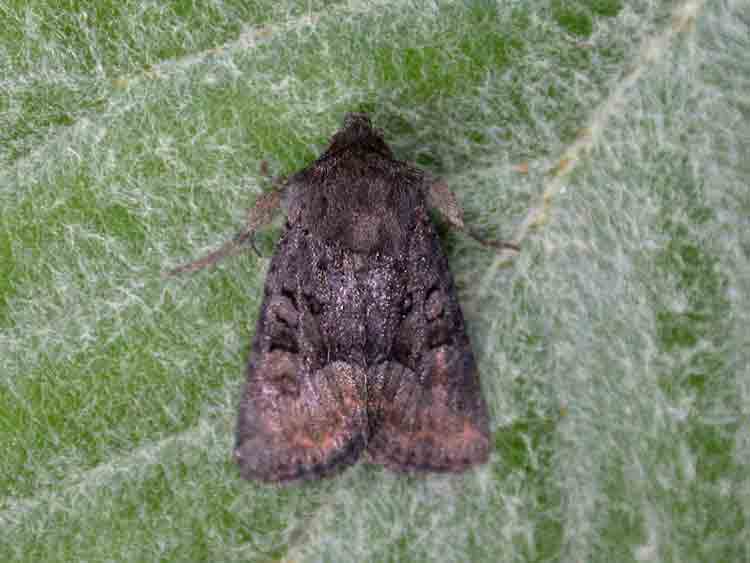Rufous Minor
Colorful Halmeulchen ( Oligia versicolor)
The Colorful Halmeulchen ( Oligia versicolor), also known as sand - Graseulchen, is a butterfly (moth ) from the family of cutworms ( Noctuidae ).
- 5.1 Notes and references
- 5.2 Literature
Features
Butterfly
With a wingspan of 24-28 millimeters moths the way one of the smaller cutworm species. The forewing color varies greatly. There are copies with a clear whitish brightened Saumfeld as before, like animals with almost monochrome blackish tint. The blemish stand out from the underground part lively, sometimes only slightly reddish to yellowish from and are outlined in black. From the stud blemish to the outer transverse line, a broad black horizontal line is usually visible. The hind wings are gray-brown without markings.
Caterpillar
Adults caterpillars show a reddish brown longitudinal stripes and a blackish sclerotization on posterior margin of the penultimate segment.
Similar Species
- The Striegel - Halmeulchen ( Oligia strigilis ) differs by a few black wires which protrude into the bright Saumfeld the forewing.
- Oligia dubia is generally drawn somewhat dull.
- The bright color elements absent in the Dark Halmeulchen ( Oligia latruncula ).
- The bog meadows Halmeulchen ( Oligia fasciuncula ) shows predominantly reddish colorations.
- When Forest Lawn Grasmotteneulchen ( Protodeltote pygarga ) the white Saumfeld does not extend to the apex. Kidney and ring blemish stand out from the darker base color clearly.
- The dry grass Halmeulchen ( Mesoligia furuncula ) differs by a wider bright Saumfeld.
For avoidance of doubt in determining a genitalmorphologische examination should be performed.
Geographical distribution and occurrence
The Colorful Halmeulchen is to central Spain, southern Italy, Bulgaria spread from the south of Scotland, southern Sweden and Estonia in the north by Europe to the Caucasus in the south. It prefers moist areas inhabited. These include, for example, meadows, bogs, wet heaths and broken woodlands, sometimes sandy soils, but not strongly xerotherm habitats.
Way of life
The crepuscular and nocturnal moths fly during the months of June to August in one generation and visit artificial light sources as well as bait. They were also to flutter rushes ( Juncus effusus ), and dwarf - elder flowers ( Sambucus ebulus ) sucking observed. The caterpillars can be found in August and after overwintering in the following year to May. They feed on sedges ( Carex ), Whitish Wood-rush ( Luzula luzoloides ), forest Zwenke ( Bracilypodium sylvaticum ) and Kentucky bluegrass ( Poa pratensis). The species overwinters as a caterpillar.
Endangering
In Germany the Colorful Halmeulchen is common regional basis is not rare and is therefore managed on the Red List of Threatened Species as not at risk.









